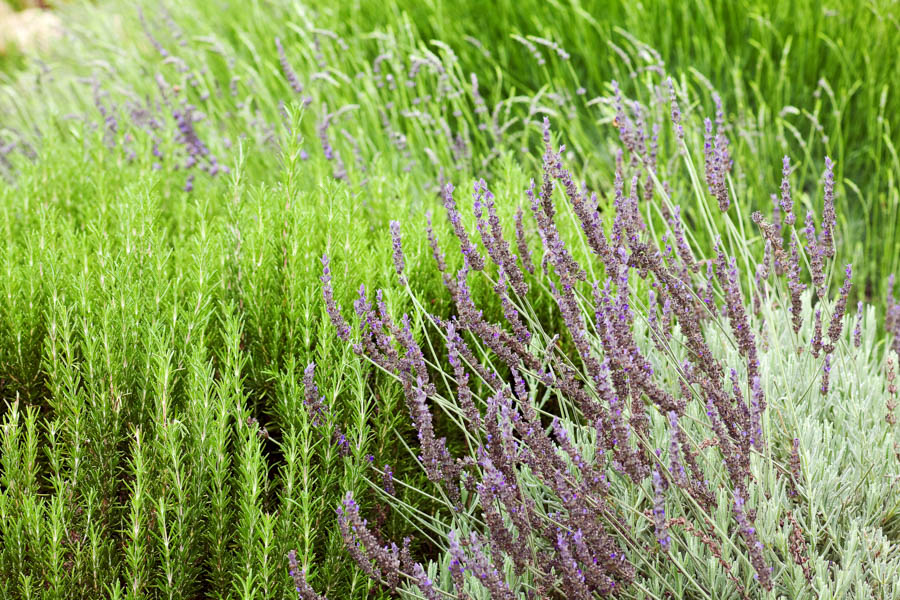Constructing a Mediterranean Herb Garden

Lavender, rosemary, thyme and common sage make ideal additions to Mediterranean-climate herb garden: they can survive and thrive without summer rain and in soils infertile and dry. Plant in full sun and well-draining soil with a neutral to slightly alkaline pH and poor to moderate fertility. All are drought tolerant; they thrive with little water in warm to hot summers and like to be dry between waterings. These plants are constructed to thrive in Mediterranean climates; for example, rosemary’s needle-like leaves retain water and transpire at lower rates than other succulent herbs while the undersides of its leaves work to reflect light and keep plants cool. All require little maintenance and, once established, little supplemental fertility. And because all are perennials, they grace the garden not just in summer when other plants struggle, but they thrive in cool, wet winters as well.
Uses in garden landscape. Lavenders fulfill an unusually broad range of functions in the landscape by providing food to beneficial insects and in offering beauty and fragrance. Many lavenders continue blooming in late summer or fall, providing food for beneficial insects when other food sources are less abundant. Thyme provides an important year-round habitat for beneficial insects, including pollinators. Rosemary attracts both butterflies and bees while salvia attracts hummingbirds, butterflies and bees. Rosemary has a characteristic aroma and sage has a light pine scent. All make attractive landscape plants.
Additional uses. Lavender has long been enjoyed for both medicinal and culinary use. Lavender oil and flowers are used for perfumes, oils, soaps, sachets, and in decorative, aromatic wands. And of course, use sage, rosemary and thyme for cooking. Retain extra rosemary branches for use as barbeque skewers.
Placement. Place lavender at the back of the bed. Place sage in front of the lavender, as sage plants grow from 1 to 3 feet in height. Use thyme as a border plant and fill in small spaces. Try planting a low-growing variety to fill spaces among stones and pavers. Or use it as a ground-cover. Plant rosemary in difficult locations within your garden, such as in marginal areas or along the edges of your space where other plants may not thrive. Use low-growing or creeping varieties of rosemary to shade and protect your soil and to prevent wind and water erosion. Prune upright varieties of rosemary into hedges.
GardenZeus has customized growing information by plant and zip code. To get started enter your zip code here.
Articles regarding other plants suitable for warm to hot Mediterranean climates include:
Getting Started With California Poppy
Baby Blue Eyes: The Versatile California Wildflower
Sky Lupine: A Lovely California Native Wildflower